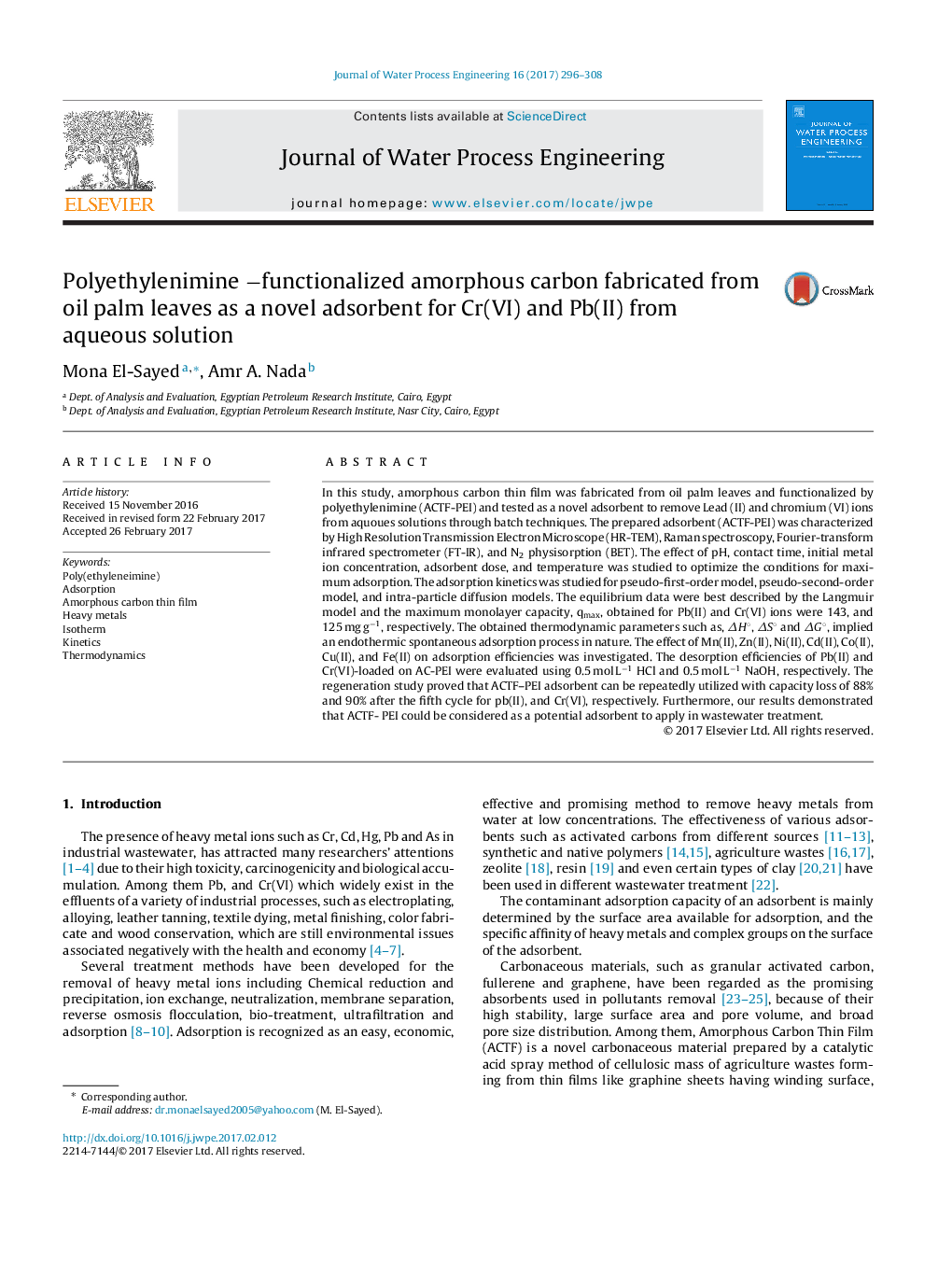| Article ID | Journal | Published Year | Pages | File Type |
|---|---|---|---|---|
| 4910084 | Journal of Water Process Engineering | 2017 | 13 Pages |
Abstract
In this study, amorphous carbon thin film was fabricated from oil palm leaves and functionalized by polyethylenimine (ACTF-PEI) and tested as a novel adsorbent to remove Lead (II) and chromium (VI) ions from aquoues solutions through batch techniques. The prepared adsorbent (ACTF-PEI) was characterized by High Resolution Transmission Electron Microscope (HR-TEM), Raman spectroscopy, Fourier-transform infrared spectrometer (FT-IR), and N2 physisorption (BET). The effect of pH, contact time, initial metal ion concentration, adsorbent dose, and temperature was studied to optimize the conditions for maximum adsorption. The adsorption kinetics was studied for pseudo-first-order model, pseudo-second-order model, and intra-particle diffusion models. The equilibrium data were best described by the Langmuir model and the maximum monolayer capacity, qmax, obtained for Pb(II) and Cr(VI) ions were 143, and 125 mg gâ1, respectively. The obtained thermodynamic parameters such as, ÎH°, ÎS° and ÎG°, implied an endothermic spontaneous adsorption process in nature. The effect of Mn(II), Zn(II), Ni(II), Cd(II), Co(II), Cu(II), and Fe(II) on adsorption efficiencies was investigated. The desorption efficiencies of Pb(II) and Cr(VI)-loaded on AC-PEI were evaluated using 0.5 mol Lâ1 HCl and 0.5 mol Lâ1 NaOH, respectively. The regeneration study proved that ACTF-PEI adsorbent can be repeatedly utilized with capacity loss of 88% and 90% after the fifth cycle for pb(II), and Cr(VI), respectively. Furthermore, our results demonstrated that ACTF- PEI could be considered as a potential adsorbent to apply in wastewater treatment.
Related Topics
Physical Sciences and Engineering
Chemical Engineering
Chemical Engineering (General)
Authors
Mona El-Sayed, Amr A. Nada,
